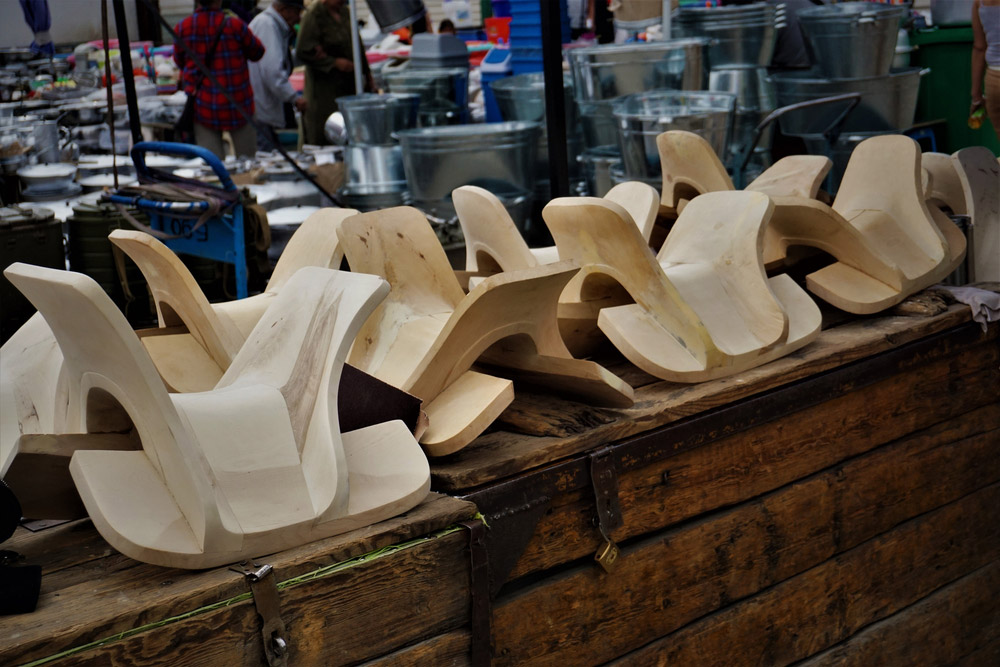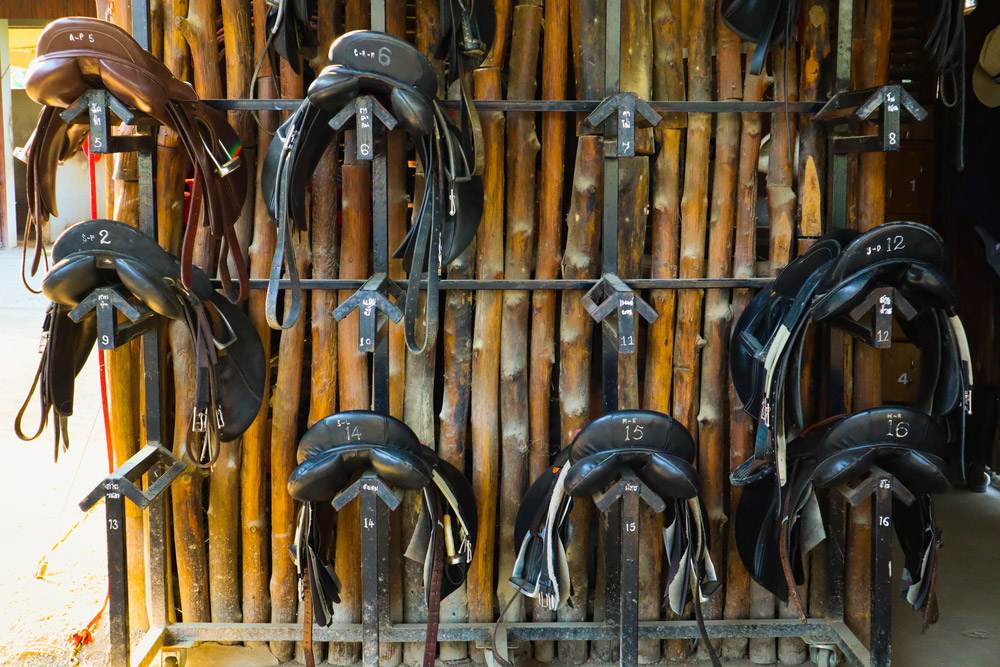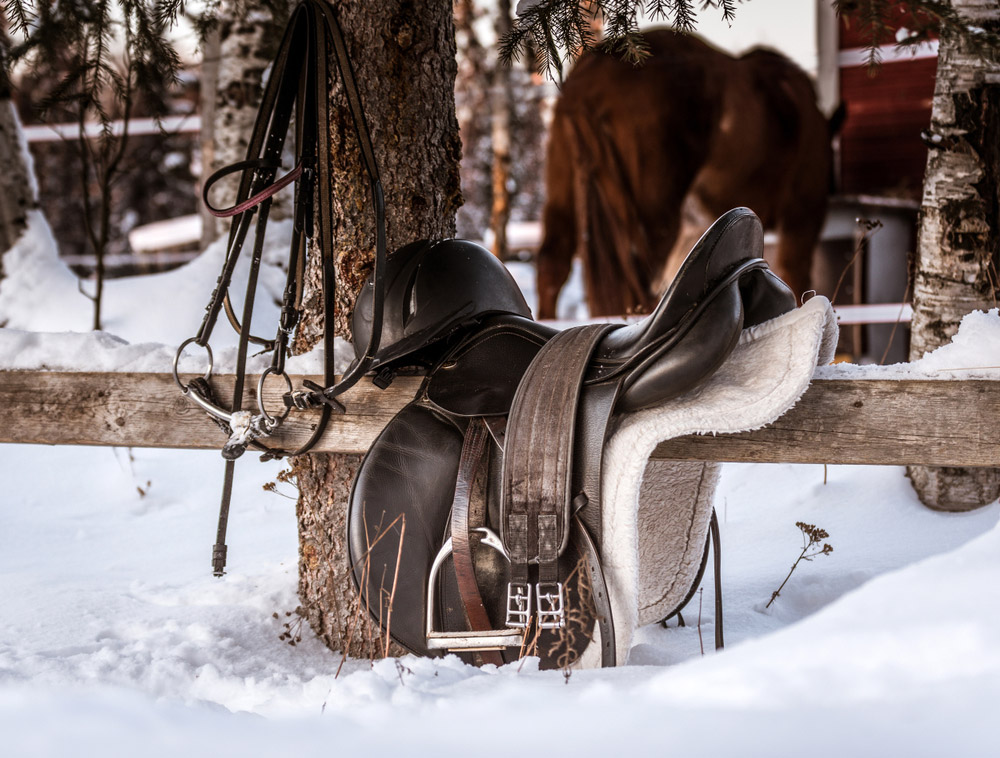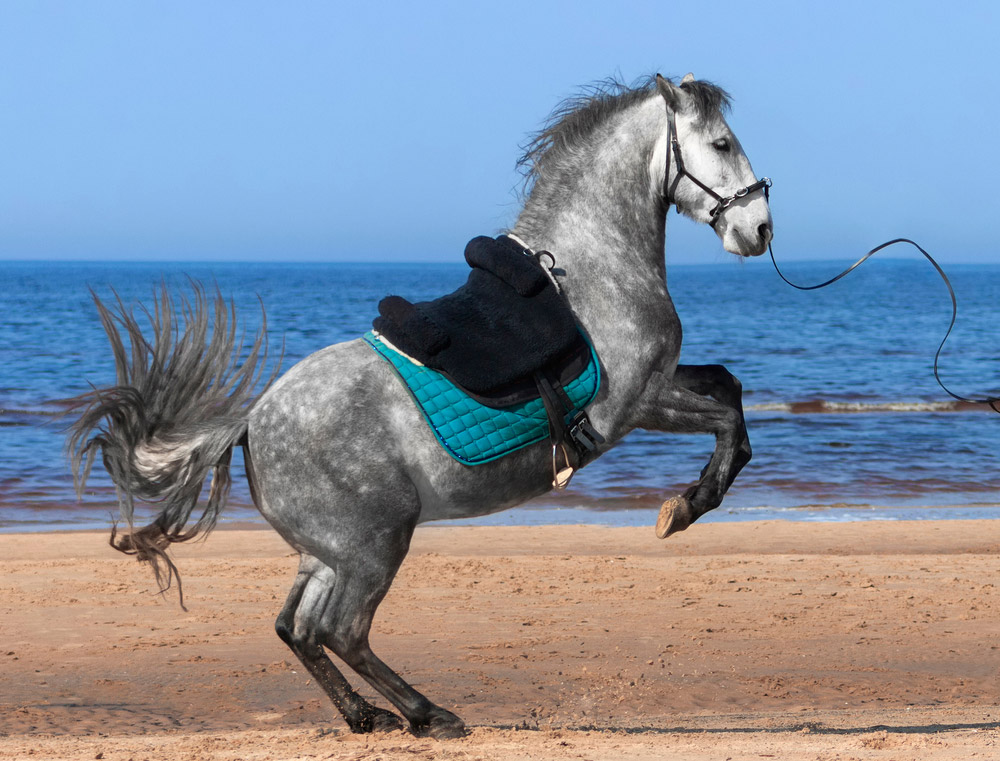The saddle tree is the foundation of a horse saddle. The basic form reflects the shape of the horse’s back. Depending on the tree design, they fit particular horse types. A poor-fitting saddle may harm your horse. You have to know how to choose the proper angle of the tree that fits your equine. This guide will help you get the hang of it.
The Purpose of a Saddle Tree
The proper fit of a saddle ensures a solid balance for the rider and the strength of the tack. To provide durability, saddle trees are made with wood or synthetic material. Saddle manufacturers usually cover the tree with leather or synthetic. This can be cow or bull hide. The whole process of crafting the best horse saddle – from scratch to a finished saddle – is made by one person.
The particular saddle tree’s size reflects the saddle fit on the equine. How the tree points drive into the horse’s shoulder. It also determines the size of the seat for the rider. The construction of saddle trees protects horses from the rider’s weight. So it can be spread evenly. As a result, horses can be ridden for long with no discomfort.

The Main Parts of a Saddle Tree
Even though saddle trees are made of wood, it’s not a whole piece. The tree commonly consists of the following parts:
- the horn;
- the swells or front;
- the cantle;
- the bars.
The Horn
Many saddles come with a horn that is usually metal. It’s attached to the swells with bolts or screws. The space around the horse is filled with filler or bond. This will make this area smooth. It’d done before the tree is covered with wet rawhide.
The Swells
The front of the swell is a one-piece wood. Swell determine the style of the future saddle. If a manufacturer makes wooden horns, it will be a whole stock of wood with the front. Such a wooden tree design adds strength to the tack gear.
The Cantle
The cantle of the tree is another wooden piece. Like the swell, it’s a one-piece cut. It can be laminated with several pieces to add strength. Cantles can be made of different heights and angles. The cantle also determines the seat size. The cantle gullet sets the width between the bars of the tree.
The Bars
The bars are a common part of a saddle tree. The style of the bars determines the saddle fit. The Arizona-style bar is the most common design. It features great rock, twist, and flare. The bar pads are spacious and fit snugly.

What Kind of Wood Are Saddle Trees Made of?
Saddle trees are commonly made with solid wood. This determines the overall strength of a tree and its lifespan. The common wood includes:
- beechwood;
- pinewood;
- laminated wood;
- plywood;
- Yellow Poplar.
Tree Covering
When a wooden tree is made, it’s time to cover it up. The tree is usually covered with leather or synthetic. Proper stitching ensures the right form. Here’s a list of the most common materials:
- Rawhide. It coats and shrinks the wood. The rawhide makes a saddle tree durable and flexible. It has a great shock-absorbing feature. The rawhide protects the tree from weather and sweat.
- Bullhide. This material is thicker than rawhide. It makes the tree stronger. It makes the tree mold the equine faster than rawhide.
- Fiberglass. It’s a quite durable material. It protects the wood underneath greatly. Fiberglass is a more budget-friendly option than raw- or bull hide.

The Sizes of a Saddle Trees
The tree angle is an important factor to keep in mind when buying a saddle. It determines the seat balance. The seat balance is different in riding styles. English saddles come with a forward seat balance. While Western tack features rear seat balance. Thus, a tree angle should be chosen properly to fit your horse well.
The first thing to remember, the whole tree shape must fit. Not just the top of the saddle. The common sizes are narrow, medium, medium-wide, and wide. While choosing a saddle, consider both the gullet plate and the angle. You can see a narrow-wide size. That means the saddle has a narrow tree angle and a wide tree width. Such a tack is great for well-trained equines. With wide barrels and their shoulders up.
Depending on the width between the bars, the basic types of saddles are:
- Standard: 5 3⁄4 inches;
- Semi-Quarter Horse: 6 inches;
- Quarter Horse: 6 1⁄4 inches;
- Full-Quarter Horse: 6 1⁄2 – 7 inches;
- Arabian: 6 1⁄4 – 7 1⁄2 inches.
How to Measure a Saddle Tree?
The most common method is to measure a tree with a measuring tape. Measure the distance between the D-rings of the horse saddle.
Check the manufacturer’s prescription while choosing a saddle. They may mention how to measure your old saddle to fit your new one. The tree size can be determined by measuring the distance between the two points of the saddle tree. Then compare your results with the size chart given by the manufacturer.
Another way to measure is to get the angle of the points. Take a protractor and measure the tree points. An 86-degree angle corresponds to a narrow saddle. A 90-degree angle corresponds to a medium saddle. And a 95-degree angle comes with a wide saddle.
What Is a Flex Tree Saddle?
Saddles with a flexible tree is a new design that is getting more attention. The tree features a rigid fork and cantle. But here, the bars can stretch to provide better horse movement. The flex tree saddle can enhance the proper fit but not create it. Such a design can fit a range of horses. That’s a good perk if you have more than one horse.
On the other hand, a flex tree saddle is not for every horse. It may cause painful pressure points on the horse’s back. The common problems are related to knots and bloody spots occurring. Heavy riders may cause extra pressure on the animal’s spine. Another downside is that flexible trees have less lifespan than traditional ones.

What Are Treeless Saddles?
Many riders prefer treeless saddles over traditional ones. As its name implies, such a saddle has no tree. Treeless saddles are lightweight, you sit closer to your horse. When you ride, this saddle makes you sit wider. Such an option may be good for a horse that is hard to fit a tree saddle.
As for the downside, a treeless saddle is less secure. The balance is not as solid as with a tree. Thus, you may be more inclined at turns. You may consider a breastplate to secure the saddle more.

The Conclusion
The proper saddle fit ensures your ride will be comfortable and secure. There are different types and sizes of saddles. This article explains all the details to help you choose the best saddle for your horse.
When you get a proper saddle, don’t forget to put on a girth behind the front legs. It will help you to keep the saddle tight. A saddle pad is another bare essential to make a comfy seat.
